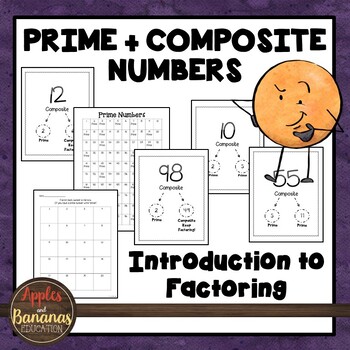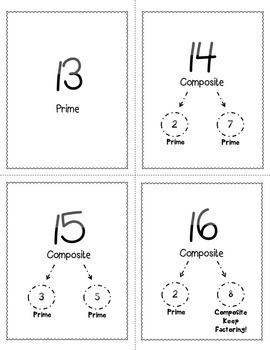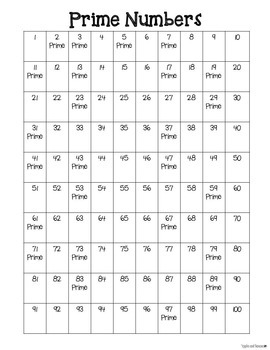Prime and Composite Numbers: Introduction to Factoring 1-100
- PDF
Description
This set of number cards features whole numbers from 1-100. There are four cards on each 8.5x11 sheet. Each number is listed as a prime or a composite (with the exception of 1 since it is neither). If a number is composite, one factor pair is listed and each factor is identified as prime or composite. If a factor pair has a composite number, students can refer back to that number in the deck to see how it is factored on its factor card.
Prime factorization is not specifically listed in the CCSS, but these cards would be great for intuitively learning that skill. These cards are designed to get kids familiar with identifying prime and composite numbers from 1-100 and to start them with one factor pair possibility for breaking down each composite.
Use these cards as references for students while learning primes, display them on a math wall so that they can look for patterns in primes and composites, and allow your kids to create their own sets of cards from 1-100 for reference.
We have included the following:
- 25 pages of cards from 1-100 labeled as prime or composite
- 1 poster with the definitions of prime and composite
- 1 poster reference sheet with the numbers 1-100 (primes are identified as prime)
- 1 hundreds chart without prime numbers identified for use as you see fit
- 5 pages of worksheets with room for listing the factors of each number 1-100
Use this packet to meet this standard:
Gain familiarity with factors and multiples.
4.OA.B.4
Find all factor pairs for a whole number in the range 1-100. Recognize that a whole number is a multiple of each of its factors. Determine whether a given whole number in the range 1-100 is a multiple of a given one-digit number. Determine whether a given whole number in the range 1-100 is prime or composite.
Use for review for the following standards:
6.NS.4 & 6.EE.1
Related Products:
**Math - Full-year Curriculum Packs**
Algebra 1, Geometry, Algebra 2 Curriculum Pack MEGA BUNDLE
Algebra 1 Curriculum Pack BUNDLE
Geometry Curriculum Pack BUNDLE
Algebra 2 Curriculum Pack BUNDLE
**If you like what you see, please click on the "Follow Me" star to learn about new products, sales, and more!





